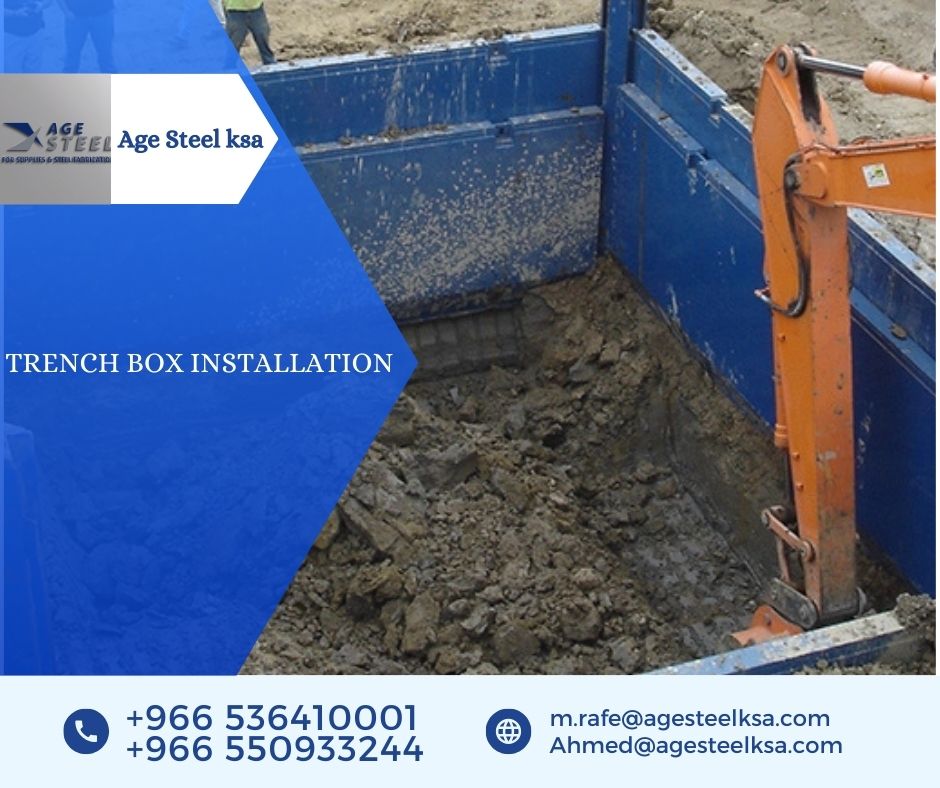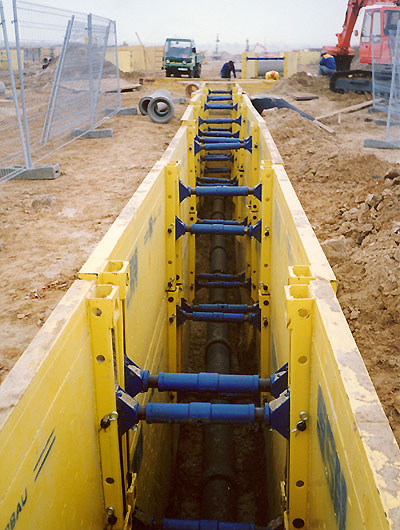
Trench box installation is a crucial procedure in construction and utility work, designed to protect workers from cave-ins while working in trenches. A trench box, also known as a trench shield, is a steel or aluminum structure that supports trench walls, providing a safe environment for workers. Proper trench box installation is essential to maintaining site safety, ensuring compliance with regulations, and enhancing productivity. A well-installed trench box minimizes the risks associated with trench collapses and ensures a smooth workflow on the construction site. With new construction methods emerging in the industry, trench box installation has become more efficient and safer.
Trench collapses pose a significant risk to workers, often resulting in fatalities or serious injuries. According to OSHA, trenching is among the most hazardous construction activities. Trench boxes help prevent soil collapses, providing a stable working space. They also facilitate efficient excavation, reducing delays and project costs. Trench box installation is crucial to ensuring that these protective structures function effectively and provide the highest level of safety for workers operating within the trenches.

Before installing a trench box, several factors must be assessed:
The trench is excavated to the required depth and width using heavy machinery. Uniform trench walls ensure a stable environment for trench box installation.
The trench box is lowered into the trench using a crane or excavator, placed close to the bottom to minimize gaps where soil movement could occur.
The box is aligned and stabilized to ensure worker safety. Precision installation prevents misalignment and potential hazards.
Backfilling around the edges secures the box, allowing safe entry and exit for workers.
OSHA requires safe access points (like ladders) within 25 feet of workers to ensure quick evacuation in emergencies.
Workers must remain within the box and keep tools secure to avoid accidents.
Once work is complete, the box is carefully lifted out to avoid sudden soil shifts, maintaining trench stability.
Age Steel is a renowned company specializing in the production and supply of trench boxes. Their products are built with premium-grade steel, ensuring durability and safety. With modern manufacturing techniques and strict quality control, Age Steel provides reliable solutions for construction companies seeking long-lasting trench protection systems.

Trench box installation is essential for worker safety and project efficiency. By following OSHA regulations, conducting regular inspections, and using high-quality trench boxes, construction teams can significantly reduce risks and ensure smooth operations. With the rise of new construction methods, trench box installation remains a vital practice in modern construction.
